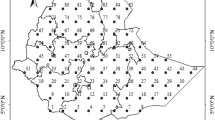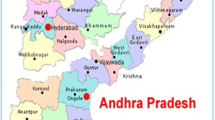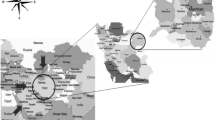Abstract
The modeling of meteorological parameters sheds light on the determination of agricultural water needs and dry periods. Predicting precipitation and, therefore, droughts provides various benefits such as increased crop yield and the prevention of harvest losses. The power of prediction plays a crucial role in achieving improved water management, enhanced crop yield, risk mitigation, economic stability, and sustainable agriculture. It is crucial for rural communities that make a living through agricultural production, to benefit from these advantages. From past to present, meteorological parameters have been estimated with many statistical models and machine learning methods. This study aims to determine the prediction success of the statistical method ARIMA and artificial neural network model LSTM by using meteorological data of Zara, Susehri, Ulas, Kangal, Gemerek and Divrigi districts stations of Sivas province, Turkey. The study was conducted using daily data collected over a period of 10 years from all districts. While R2 ranged between 0.06–0.94 in the ARIMA models, R2 success was between 0.63–0.96 in the LSTM models. According to the results obtained, LSTM layer with 8–16-32 neurons, epoch value in the range of 100–300, learning rate of 5e−4 and 146e−5, between 1e−2 –1e−6 decay, Adam optimization, in which ReLu activation is used in each layer, in the estimation of meteorological parameters in the region. It has been determined that the LSTM method with batch size configuration in the range of 8–256 is the best alternative. Although the ARIMA model is a common model that has been used for many years, it is determined that the LSTM model are superior to the ARIMA model with the diversity and controllability of the variables, and more successful results can be obtained.
Access this chapter
Tax calculation will be finalised at checkout
Purchases are for personal use only
Similar content being viewed by others
References
Hochreiter, S., Schmidhuber, J.: Long short-term memory. Neural Comput. 9(8), 1735–1780 (1997)
Gers, F.A., Schmidhuber, J., Cummins, F.: Learning to forget: continual prediction with LSTM. Neural Comput. 12(10), 2451–2471 (2000)
Tektas, M.: Weather forecasting using ANFIS and ARIMA models. Environ. Res. Eng. Manag. 51(1), 5–10 (2010)
Bari, S.H., Rahman, M.T., Hussain, M.M., Ray, S.: Forecasting monthly precipitation in Sylhet city using ARIMA model. Civil and Environ. Res. 7(1), 69–77 (2015)
Pasaribu, Y.P., Fitrianti, H., Suryani, D.R.: Rainfall forecast of merauke using autoregressive integrated moving average model. In: E3S Web of Conferences (73), 12010. EDP Sciences (2018)
Akbari Asanjan, A., Yang, T., Hsu, K., Sorooshian, S., Lin, J., Peng, Q.: Short-term precipitation forecast based on the PERSIANN system and LSTM recurrent neural networks. J. Geophysical Res.: Atmospheres 123(22), 12–543 (2018)
Duong, T.A., Bui, M.D., Rutschmann, P.: Long Short Term Memory for Monthly Rainfall Prediction in Camau (2018)
Kaneko, R., Nakayoshi, M., Onomura, S.: Rainfall prediction by a recurrent neural network algorithm LSTM learning surface observation data. In: AGU Fall Meeting Abstracts, Vol. 2019, pp. GC43D-1354 (2019)
Kumar, A., Islam, T., Sekimoto, Y., Mattmann, C., Wilson, B.: Convcast: an embedded convolutional LSTM based architecture for precipitation nowcasting using satellite data. PLoS ONE 15(3), e0230114 (2020)
Salman, A.G., Heryadi, Y., Abdurahman, E., Suparta, W.: Single layer & multi-layer long short-term memory (LSTM) model with intermediate variables for weather forecasting. Procedia Computer Sci. 135, 89–98 (2018)
Li, Z., Zou, H., Qi, B.: Application of ARIMA and LSTM in relative humidity prediction. In: 2019 IEEE 19th International Conference on Communication Technology (ICCT), pp. 1544–1549. IEEE (2019)
Poornima, S., Pushpalatha, M.: Prediction of rainfall using intensified LSTM based recurrent neural network with weighted linear units. Atmosphere 10(11), 668 (2019)
De Saa, E., Ranathunga, L.: Comparison between ARIMA and Deep Learning Models for Temperature Forecasting. arXiv preprint arXiv:2011.04452 (2020)
Sekertekin, A., Bilgili, M., Arslan, N., Yildirim, A., Celebi, K., Ozbek, A.: Short-term air temperature prediction by adaptive neuro-fuzzy inference system (ANFIS) and long short-term memory (LSTM) network. Meteorology and Atmospheric Physics, pp. 1–17 (2021)
Ouma, Y.O., Cheruyot, R., Wachera, A.N.: Rainfall and runoff time-series trend analysis using LSTM recurrent neural network and wavelet neural network with satellite-based meteorological data: case study of Nzoia hydrologic basin. Complex & Intelligent Systems, pp. 1–24 (2021)
Samad, A., Gautam, V., Jain, P., Sarkar, K.: An approach for rainfall prediction using long short term memory neural network. In: 2020 IEEE 5th International Conference on Computing Communication and Automation (ICCCA), pp. 190–195. IEEE (2020)
Dubey, A.K., Kumar, A., García-Díaz, V., Sharma, A.K., Kanhaiya, K.: Study and analysis of SARIMA and LSTM in forecasting time series data. Sustainable Energy Technol. Assess. 47, 101474 (2021)
Wu, X., et al.: The development of a hybrid wavelet-ARIMA-LSTM model for precipitation amounts and drought analysis. Atmosphere 12(1), 74 (2021)
Anonymous. Sivas Provincial Directorate of Agriculture and Forestry Annual Report, Sivas (2018)
TUIK (2020). https://biruni.tuik.gov.tr/medas/?kn%3D95%26locale%3Dtr Access 20 Dec 2021
Box, G.E., Jenkins, G.M., Reinsel, G.C., Ljung, G.M.: Time Series Analysis: Forecasting and Control. John Wiley & Sons (2015)
Alabdulrazzaq, H., Alenezi, M.N., Rawajfih, Y., Alghannam, B.A., Al-Hassan, A.A., Al-Anzi, F.S.: On the accuracy of ARIMA based prediction of COVID-19 spread. Results in Physics 27, 104509 (2021)
Dickey, D.A., Fuller, W.A.: Distribution of the estimators for autoregressive time series with a unit root. J. Am. Stat. Assoc. 74, 427–431 (1979)
Kingma, D.P., Ba, J.: Adam: A Method for Stochastic Optimization. ArXiv preprint arXiv:1412.6980 (2014)
Jindal, H., Sardana, N., Mehta, R.: Analyzing performance of deep learning techniques for web navigation prediction. Procedia Computer Sci. 167, 1739–1748 (2020)
Acknowledgments
We would like to thank TSMS for meteorological data. The article was developed from the MSc thesis of Aydin Ozan CETINTAS.
Author information
Authors and Affiliations
Corresponding author
Editor information
Editors and Affiliations
Rights and permissions
Copyright information
© 2023 The Author(s), under exclusive license to Springer Nature Switzerland AG
About this paper
Cite this paper
Cetintas, A.O., Apaydin, H. (2023). Modeling and Prediction of Meteorological Parameters Using the Arima and LSTM Methods: Sivas Province Case. In: Kabassi, K., Mylonas, P., Caro, J. (eds) Novel & Intelligent Digital Systems: Proceedings of the 3rd International Conference (NiDS 2023). NiDS 2023. Lecture Notes in Networks and Systems, vol 783. Springer, Cham. https://doi.org/10.1007/978-3-031-44097-7_27
Download citation
DOI: https://doi.org/10.1007/978-3-031-44097-7_27
Published:
Publisher Name: Springer, Cham
Print ISBN: 978-3-031-44096-0
Online ISBN: 978-3-031-44097-7
eBook Packages: Intelligent Technologies and RoboticsIntelligent Technologies and Robotics (R0)




